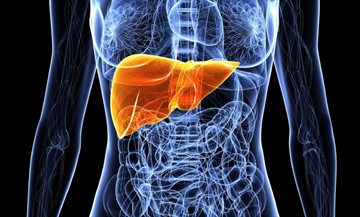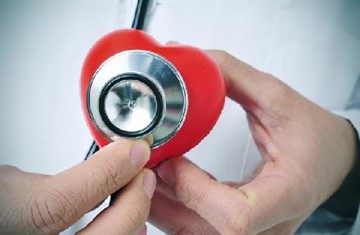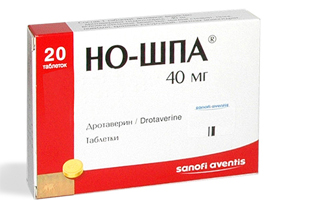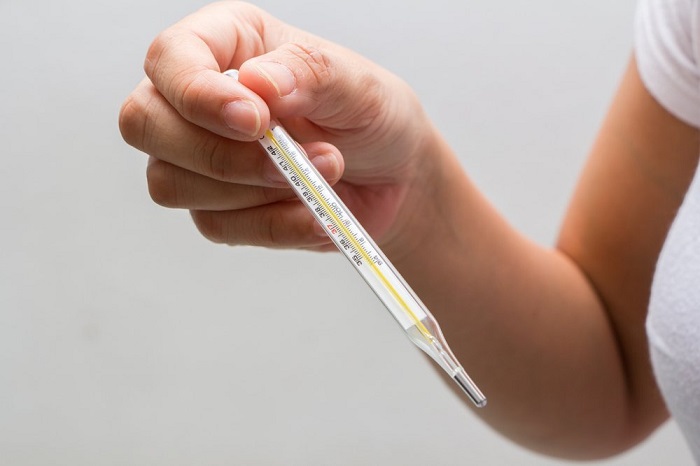Combination of hyperthermia with hypotension is a rare phenomenon. Medical experts believe that this set of symptoms does not have a clear connection. It is most common with the development of viral diseases such as influenza or ARVI. Often, in such a case, the symptoms of the disease are joined by the phenomena of general intoxication of the body, expressed in the presence of nausea, headache, and joint aches.
If the patient does not have infectious diseases, then it is necessary to analyze these manifestations separately. Too low blood pressure figures are often observed in various states of the body, and a slight rise in temperature (37-38) may indicate a failure in some of its systems. Such a combination of signs should be alarmed when it has been going on for a long time and causes severe discomfort.
Thermometer readings depend on many factors. The immune and vascular systems, endocrine organs, water-salt metabolism, etc. are involved in the regulation of heat exchange. Therefore, with the development of a disease or an unfavorable condition, fever may well appear, accompanied by low A / D rates.
Low blood pressure and a temperature of 37 degrees usually mean that an infection has developed in the body with hypotension, often a viral one.Other most common causes of this condition are:
- First trimester of pregnancy;
- hormonal disbalance;
- prolonged hard physical work;
- endocrine diseases;
- liver failure;
- diseases of the peripheral nervous system;
- cardiopathology;
- vascular disorders;
- diseases of the hematopoietic organs;
- iron-deficiency anemia;
- chronic fatigue syndrome;
- nervous overstrain.
With these various diseases, such a set of symptoms can be explained by a violation of thermoregulation, a general decrease in the tone of the body, a sharp release of hormones that caused the corresponding dysfunction. All this requires close monitoring of the patient.
In this case, the temperature must be measured at least twice a day and at least three times a day to check the blood pressure indicators. If, after five days, this symptomatology does not disappear, then you need to see a doctor.
Previously, medical science was of the opinion that a prolonged subfebrile condition (37.2-38) against the background of severe hypotension may indicate the development of a malignant tumor. But later, this opinion was refuted by numerous studies, during which it was proved that the patient's pressure remains the same as it is always characteristic of him.
Ignoring hypotension is not recommended. In the presence of severe atherosclerosis and elevated temperature with fever, it can lead to the formation or separation of an already formed blood clot. With the blood flow, it is able to enter a vital organ and cause a heart attack or stroke. This is especially dangerous in cases where the pressure is already low, and as a result of hyperthermia, it drops to alarming numbers, which can threaten with collapse.
Such a phenomenon can become even more alarming in hypertensive patients, when, with a sharp drop in A / D indicators, a vessel rupture sometimes occurs.Decrease in temperature and increase in blood pressure
The peculiarities of thermoregulation in various diseases should be taken into account. The immune system causes hyperthermia, and the vasculature reacts with a decrease in A / D. This is due to the fact that the cerebral cortex reacts to the appearance of heat with a decrease in vascular tone due to a sharp rush of blood to the head or lungs.
In this case, the number of heartbeats decreases, which slows down the intensity of blood circulation in the small circle and, thereby, facilitates the general condition of a person.
Low pressure and temperature create severe discomfort in the patient's body. If they are caused by development viral infection, which most often causes this, then the patient experiences:
- Chills;
- fever;
- muscle pain;
- weakness;
- migraine;
- dizziness;
- darkening in the eyes;
- tachycardia;
- difficulty breathing;
- cough.
 He has a strong pallor of the skin, profuse sweat, a rare pulse. These symptoms are associated with hyperthermia, toxic effects on the body of the products of the activity of viruses, the development of respiratory symptoms and vascular insufficiency.
He has a strong pallor of the skin, profuse sweat, a rare pulse. These symptoms are associated with hyperthermia, toxic effects on the body of the products of the activity of viruses, the development of respiratory symptoms and vascular insufficiency.
The pressure can drop very low and be around 80/50. Hypotension increases the patient's weakness and malaise in cases where his normal values \u200b\u200bcorrespond to the norm, that is, they are 120/80.
In some people, when they develop influenza or SARS, their blood pressure can drop significantly. This is due to the compensatory response to hyperthermia. The vascular system responds by lowering its tone in order to avoid unnecessary stress on the heart and brain.With flu or ARVI, a combination of subfebrile condition and reduced pressure is not too dangerous complex. Thus, the body facilitates the general condition of a person, preventing the development of complications. It will be much worse if the A / D numbers creep up.
Lack of hemoglobin
Another main cause of a drop in blood pressure in the presence of temperature readings of 37-37.5 degrees can be iron deficiency anemia. It develops with a lack of such an element as hemoglobin in red blood cells. This usually becomes the result of severe blood loss, vitamin deficiency or treatment with certain drugs.The pressure drops due to a lack of blood volume in the vascular bed. The disease is accompanied by the following symptoms:
- Great weakness;
- weak filling of the pulse;
- arrhythmia;
- dizziness;
- lack of appetite, etc.
All of these symptoms reflect a combination of a drop in pressure and elevated temperature. In this case, if the disease is severely neglected, it is required health care... Only a specialist, after conducting laboratory tests, can accurately diagnose it. In the course of treatment, the doctor will find a way to deal with all manifestations of the disease at the same time.
If a sharp drop in hemoglobin is a temporary factor characteristic of young girls, women of menopause, people who have suffered severe injuries or dehydration, then no special treatment is required. The body itself will restore all the necessary indicators.
Treatment of hypothermia and low blood pressure
 If the pressure drops very low to 90/60, urgent medical attention is needed. To begin with, the doctor needs to establish an accurate diagnosis. To do this, he needs to examine the patient, collect a detailed history, measure all indicators.
If the pressure drops very low to 90/60, urgent medical attention is needed. To begin with, the doctor needs to establish an accurate diagnosis. To do this, he needs to examine the patient, collect a detailed history, measure all indicators.
In order to find out why a person has low blood pressure and high temperature, the reasons can be found through laboratory research. A clinical and biochemical blood test should be prescribed, general analysis urine, swab from the nose and throat.
A number of instrumental studies are also required. To do this, you need to undergo fluorography, radiography, ultrasound scanning, electroencephalogram, ECG, computed and magnetic resonance imaging.
To stop the pathological condition, drugs are needed to treat the underlying disease. May also apply:
- Antipyretic drugs;
- caffeine;
- cardiac glycosides;
- iron preparations;
- vitamins;
- antiviral substances;
- beta blockers;
- anti-inflammatory medicines, etc.
They will make it possible to bring down high body temperature indicators, get rid of the infection, and slightly increase blood pressure. When the thermometer indicators stabilize, the pulse will return to normal.
The destruction of the infection will eliminate the symptoms of intoxication, which means it will stop headache, fever and excessive sweating will disappear. Vascular agents and glycosides will help normalize cardiac activity.Thus, there are many reasons why a low pressure and temperature of 38 degrees can be observed. Be sure to take into account the regular figures of their measurement.
If a person is naturally hypotonic, then hyperthermia will not affect the activity of his vascular system in the absence of complications. In such a situation, the doctor focuses on the readings of the thermometer and begins to treat the underlying disease that caused the fever.
May 3, 2017 Julia Astafieva
With physical and psycho-emotional overstrain.
But often deviations of pressure and temperature from the norm indicate the development of the disease.
What the low temperature under pressure speaks about, the article will tell.
Normally, the body temperature is 36.6 degrees (by the evening this figure can rise to 37 degrees). Normal pressure is about 120/80 mm Hg.
But sometimes these values \u200b\u200bgo down or up. At the same time, the state of health also changes. The reasons for the deviations can be different.
The most harmless is fatigue. But often the condition worsens with the development of serious diseases. The rate of biochemical reactions depends on the level of thyroid hormones. If for no apparent reason a person begins to suffer from weakness, low blood pressure, this indicates the presence of endocrine disorders. At the same time, weight changes, apathy and memory impairment are observed.
Diabetes mellitus is accompanied by a decrease in the rate of glucose oxidation. As a result, the body temperature drops slightly. This pathology is also characterized by frequent urge to urinate, strong thirst, decreased sensitivity of the legs and arms.
 If there is a low body temperature and high blood pressure at the same time, this may indicate the presence of liver disease.
If there is a low body temperature and high blood pressure at the same time, this may indicate the presence of liver disease.
This condition is explained by the fact that the body's ability to absorb carbohydrates is reduced.
The content of glycogen in the blood decreases. Deficiency of this substance is perceived by the body as a critical situation. The response is to try to reduce energy expenditure by lowering body temperature.
People who suffer from heart failure usually have low blood pressure, low temperature, weakness,. A slightly low temperature with unstable blood pressure may be the first symptom of developing cancer. Over time, the indicators of the thermometer and tonometer fall even lower due to the weakening of the body.
Sometimes low fever and blood pressure is observed after taking sedatives. Long-term use of some medicines leads to a weakening of the human body, a decrease in the tone of the walls of blood vessels.
So low or high blood pressure and low body temperature can have different causes. If this condition lasts longer than three days, it is recommended to see a doctor. Timely diagnosis and treatment will help to quickly eliminate unpleasant manifestations of the disease and avoid complications.
Low temperature and blood pressure
With hypotension
 Decreased readings of the thermometer and tonometer are characteristic of hypotension. In this case, the state of health usually worsens for a long time.
Decreased readings of the thermometer and tonometer are characteristic of hypotension. In this case, the state of health usually worsens for a long time.
There are many people whose pressure and temperature are below the established standards.
But at the same time they are efficient and energetic, they do not show any deviations in the state of health. For this category, underestimated values \u200b\u200bare considered the norm.
But if a person has always had a temperature of 36.6 degrees, and the pressure is about 120/80 mm Hg, and recently these values \u200b\u200bhave decreased, we can talk about the development of hypotension.
The development of hypotension is caused by various reasons:

- severe stress;
- liver disease;
- serious blood loss;
- chronic fatigue;
- disturbed sleep patterns;
- low hemoglobin levels;
- cardiovascular pathology;
- neurological deviations;
- changes in the hormonal background. For example, due to pregnancy, taking hormonal drugs;
- long and strong physical activity. Many miners, heavy industry workers, athletes suffer from hypotension.
At low values \u200b\u200bof pressure and temperature, the patient feels chill, drowsiness. The skin turns pale, the limbs get cold. With further development, the disease is aggravated by fainting, headache.
Sometimes it is easy to overcome hypotension at the initial stage of its development by revising lifestyle and nutrition. It is much better than taking a hypertensive pill. Since the body recovers on its own.
With hypertension
 When the temperature drops rarely. If the thermometer readings are below normal, this indicates the presence of a serious pathology.
When the temperature drops rarely. If the thermometer readings are below normal, this indicates the presence of a serious pathology.
For example, about heart problems, endocrine disorders. Often this condition is observed with vegetative-vascular dystonia.
Low temperature, high blood pressure occur when there are malfunctions in the work of some organs. For example, with pathologies of the thyroid gland, adrenal glands, impaired renal function.
Often they try to improve their well-being by choosing medications... You can't do that. Otherwise, the condition can worsen greatly. It is worth contacting a highly qualified endocrinologist.
Diagnostics
Visually, even the most experienced physician is not able to accurately diagnose pathology. After all, diseases that are characterized by a low temperature, low or high pressure a lot of.
Therefore, the endocrinologist prescribes a series of examinations based on the clinical picture and patient complaints. An ultrasound scan of the thyroid gland is usually done.
Also sent to donate blood to determine the level of thyroid hormones. If there is a suspicion of kidney pathology, a general urine test, a biochemical blood test, an ultrasound of the kidneys are done.
Related Videos
Why does the pressure jump? ? Answers in the video:
Thus, a low temperature combined with high or low blood pressure may indicate the development of a serious illness. Therefore, you should not hesitate to visit an endocrinologist. The sooner the pathology is diagnosed and an effective treatment regimen is selected, the faster the state of health will improve.
Average normal pressure reaches 120/80. Significant deviations from the norm will indicate cardiovascular pathologies.
High temperature at low pressure
Today, symptoms such as low blood pressure and high temperature have no clear cause. Most often, this phenomenon can be observed with ARVI or influenza. In addition to low blood pressure and temperature, general weakness and nausea can join.
The causative agents of influenza and ARVI are viruses of various etiologies that enter the body against the background of dysfunction of the immune system. They are seasonal, and the peak of the epidemic is autumn-spring.
Often with common symptoms you can also observe a decrease in blood pressure. In this case, it is not necessary to increase it medically. Only standard treatment for viral disease is recommended.
It was previously believed that low blood pressure against a background of an increased temperature of 37.0-38 is a symptom of oncopathology. However, today this statement is false. Indeed, at the precancerous stage, it is possible to observe an increase in temperature, but blood pressure indicators are almost always normal.
Decrease in temperature and blood pressure
In medicine, low blood pressure is called hypotension, and it develops in both men and women. A decrease in blood pressure is often accompanied by weakness, and as a result, a decrease in central body temperature. At the same time, low pressure can reach 90/60 mm and show body temperature below 36.5.
In the case when hypotension is not accompanied by severe symptoms, and a low temperature does not worsen the general condition, there is no reason for concern. This state does not require a specific drug treatment... Diagnostics is required when the patient observes a decrease in temperature for a long time.
It should be noted that the temperature regime is regulated by various metabolic processes, the work of blood vessels, etc. Any pathology in these processes can lead to arterial hypertension, which provokes a decrease in temperature.
The main causes of development are known low pressure and low temperature:
- chronic fatigue, psycho-emotional stress;
- the first trimester of pregnancy due to hormonal changes;
- with heavy and prolonged physical exertion, for example, among professional athletes;
- diabetes;
- liver pathology;
- neurological diseases;
- cardiovascular disease;
- low hemoglobin levels.
Very often, against the background of low temperature and pressure, the patient feels chill, the skin becomes pale, insomnia and headaches appear. During the day, there is drowsiness and a decrease in body temperature to 33 degrees. In more severe cases, fainting is possible.
As you can see, low pressure at high temperatures is not as dangerous as at low temperatures, and often indicates viral disease by type of ARI, ARVI. Sometimes blood pressure can be the first symptom of myocardial infarction, especially in the elderly.
Often, this phenomenon accompanies patients diagnosed with vegetative-vascular dystonia, while low blood pressure and temperature do not cause discomfort.
Treatment of hypothermia and low blood pressure
In most cases, with a correctly established cause and its treatment, such a phenomenon as low pressure and low temperature disappears. In this case, additional medication is not required. When  hypotension acts as a primary condition, then its therapy can be produced by means that contain caffeine or tinctures of hawthorn and lemongrass.
hypotension acts as a primary condition, then its therapy can be produced by means that contain caffeine or tinctures of hawthorn and lemongrass.
If we separately talk about the lowered temperature, then as such there are no drugs for raising it, in contrast to the means for lowering it. However, to raise the temperature, it is possible to use no-spa or nicotinic acid. To normalize blood pressure, cardiologists often prescribe dopamine, mezaton. In the case when this phenomenon is caused by stress, antidepressants of various groups are prescribed.
According to experts, a good prevention of lowering blood pressure and temperature is not intense physical activity: exercises, swimming, walking. A good sleep of at least 8-9 hours is also important.
The climate for hypotonic patients is also important. Abrupt changes in climatic conditions can provoke a decrease in central body temperature and cause stress, which will only aggravate the process.
Stuffy rooms should also be avoided. A visit to the sauna or bath is undesirable - it is fraught with dizziness and loss of consciousness. It is recommended to carry out a therapeutic massage of the neck-collar zone every 3 months.
However, such patients will benefit from contrast showers, which strengthen blood vessels and increase immunity. In addition, it is recommended to take vitamin C and B vitamins, good nutrition, and an increase in the amount of protein consumed.
As mentioned above, there is a connection between blood pressure and body temperature, and their violation can be the cause of a number of pathologies, both harmless and capable of causing irreparable harm to health.
If the pressure in men does not rise more than 100/65 mm, and in women it is 95/60 mm, then they are diagnosed with arterial hypotension.
In addition, low blood pressure can be accompanied by poor health, because blood vessels lose their tone, blood supply and heart function decreases, and in addition, body temperature decreases. In some cases, it may even be 35.8 ° C. Hypotension is a complication of a serious illness or occurs on its own.
Low temperature readings
The first thing to say is that the temperature of a healthy person can change during the day. Moreover, in the female sex, it will be much higher than that of the male.
But if a person observes a low temperature for a long time, this should alert him, because such a symptom may indicate a serious illness.
When measuring temperature or blood pressure indicators, you need to pay attention to your health. Because some people can feel completely normal, even when their performance is significantly different from the average. This suggests that low body temperature and low blood pressure are an individual feature of the human body that does not need treatment.
If individual indicators are reduced by twenty percent or more, then it is recommended to undergo a full examination of the body. Because a change in indicators in any direction can occur only due to some disease, they cannot do this on their own.
The body temperature is kept normal thanks to metabolic processes, the work of the circulatory system, and muscle contractions. In addition, the process of sweating affects the indicators.
If there are any violations in the processes described above, then ultimately, this will lead to arterial hypotension.
Low temperature reasons
 Let's take a closer look at the main reasons that lead to the fact that the temperature and blood pressure will be lowered.
Let's take a closer look at the main reasons that lead to the fact that the temperature and blood pressure will be lowered.
- Fatigue.
If a person has insomnia, he will always be tired. Also, this can include regular stressful situations, depressive conditions and much more.
2. The period of bearing the baby.
This is especially true in the first weeks, when the body begins to get used to its new state.
3. Low pressure.
Low blood pressure and temperature, a common occurrence for athletes, when they have too long training. Thus, the body tries to protect itself from energy waste.
4. Pathology of the endocrine system.
It should be noted here malfunctioning of the thyroid gland. With a decrease in the level of certain hormones, all biochemical processes in the body slow down. In addition to the fact that the body temperature indicators fall, the person's weight changes, apathy, weakness appear and memory is impaired.
5. Diabetes mellitus.
The first stages of the development of the disease. If a person has a strong thirst, he begins to feel bad limbs, often goes to the toilet and much more. All of these signs indicate that diabetes is developing.
6. Diseases of the liver.
All diseases in which carbohydrates are poorly absorbed lead to low glycogen levels. If there is too little of it in the body, then the body temperature drops.
7. Neurological pathology.
Disorders such as spinal cord injury, osteochondrosis, rheumatism, muscle paralysis lead to a decrease in body temperature. And all because, in the muscles, nutrients are poorly broken down.
8. Heart ailments.
Due to the fact that the impact force decreases, the blood flow moves at a lower speed and the pressure on the vessel walls decreases.
9. Bleeding.
Large bleeding, which can occur with: serious injuries, operations, heavy menstruation, inflammatory processes, poisoning of the body, as well as exacerbation chronic diseases, lead to the fact that the body temperature will drop.
10. Anemia.
A drop in blood pressure and the appearance of anemia can occur with prolonged adherence to strict diets. They lead to a lack of vitamins in the body, this affects the level of hemoglobin, metabolic processes. All this also leads to headaches, pallor of the skin, frequent heart contractions and many other symptoms.
11. Cancer diseases.
If a cancer pathology has struck the hypothalamus, then the temperature rises or falls. These symptoms appear almost immediately after the onset of the development of the disease. But nausea and dizziness occur much later.
12. The use of sedatives for a long time.
If you take drugs for a long time that help to calm down, relieve pain, lower the temperature or diuretics, then the pressure and temperature indicators decrease.
Signs indicating low body temperature
During the diagnosis of the disease, the doctor asks the patient, during which time he has a low body temperature and characteristic symptoms. If a person has such a condition recently, then there is no reason for concern. In addition, you must pay attention to the fact that temperature readings may change during the day. For example, in the evening, a person will have a temperature of 37 degrees. When, against the background of this, a person loses his ability to work, then he needs qualified medical care.
With a low degree of body temperature, the limbs become cold and pale. General weakness, insomnia, headache appear, breathing and memory are disturbed. In addition, other violations occur.
If the body temperature drops below thirty-three degrees, a person may experience fainting and loss of space.
The most dangerous condition is called when the temperature or pressure drops sharply, this usually manifests itself in heart attacks, allergies, severe internal bleeding and many other conditions.
In such situations, the patient must be immediately sent to the clinic, or an ambulance must be called.
Low pressure and temperature therapy
 When the main cause of such a condition is eliminated, and the person feels great, then additional treatment is not required.
When the main cause of such a condition is eliminated, and the person feels great, then additional treatment is not required.
When low blood pressure has arisen on its own, stimulants that contain caffeine come to the rescue. Some medicinal plants contain this component, for example: hawthorn, ginseng, lemongrass and many others.
It should be noted that there are no drugs in pharmacology that can increase body temperature, which cannot be said about drugs that lower it. For example, if a person has a high temperature, you can take a pill and it will immediately feel better. But this cannot be done with a low one.
To increase, you can use funds that dilate blood vessels and enhance heat transfer. These include nicotinic acid, no-spa, and more.
With reduced pressure, dopamine, saparal, mezaton and many other drugs will help.
To normalize the emotional state, tranquilizers and antidepressants are used. If a person is surrounded by regular stressful situations, then the doctor selects effective drugs for him.
The best therapy is small but regular physical activity. In which, blood flow increases, and the tone of blood vessels.
Also, the patient should fully rest, and the duration of sleep should be at least ten hours.
